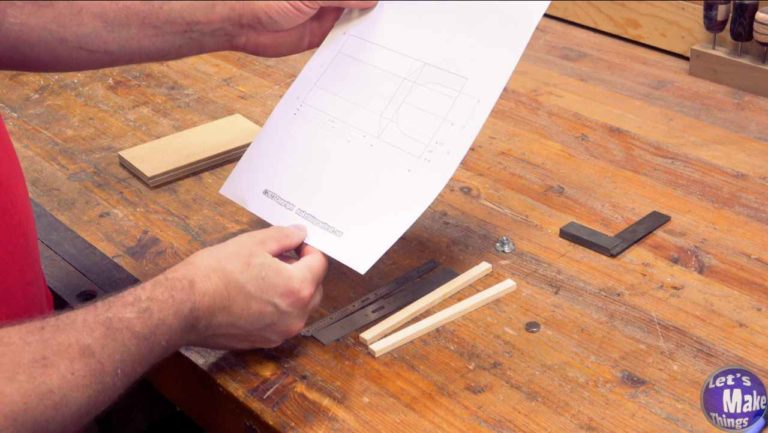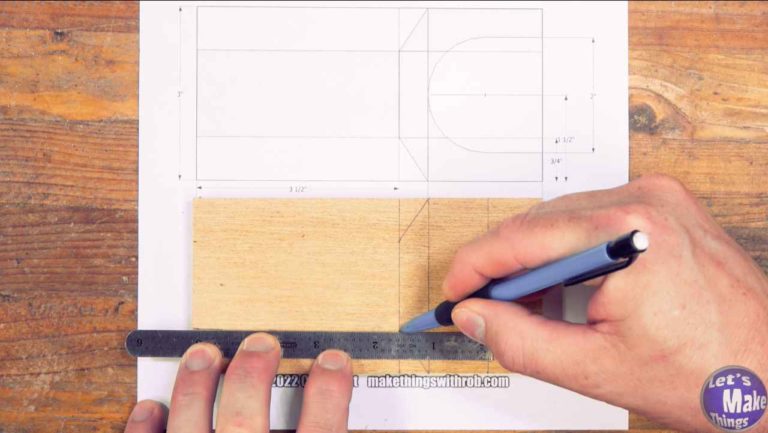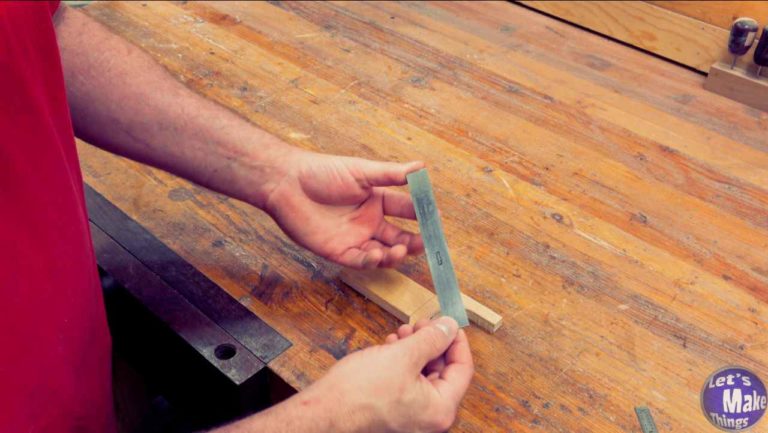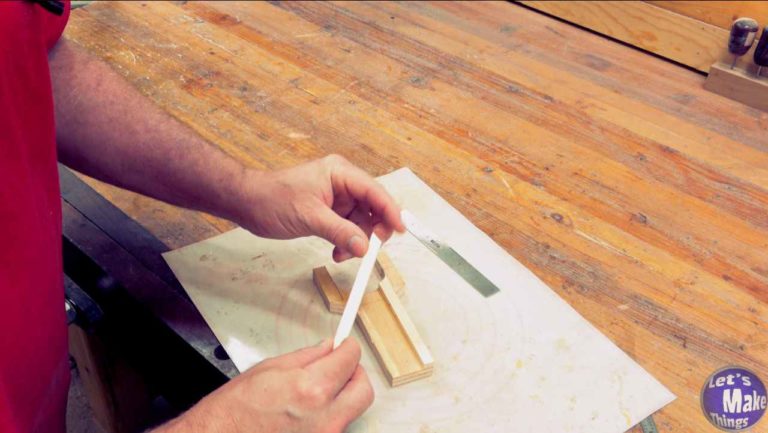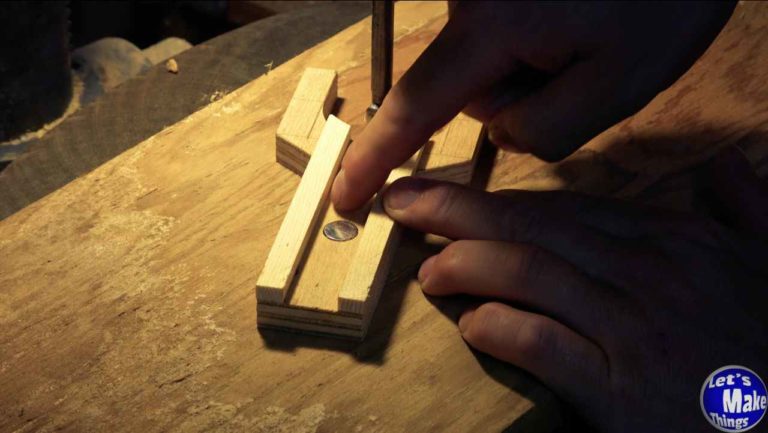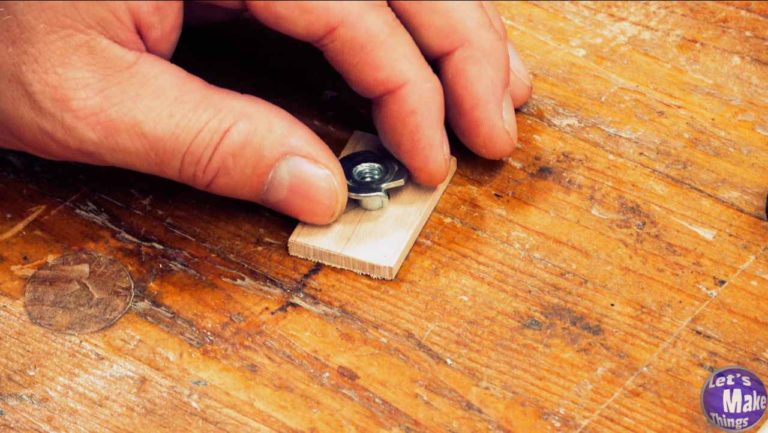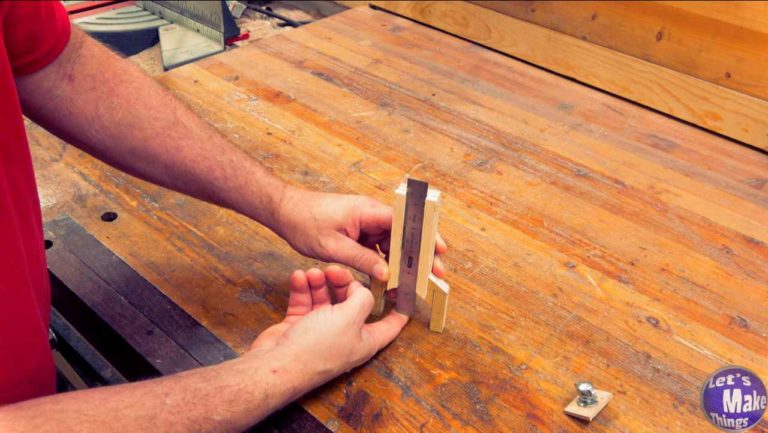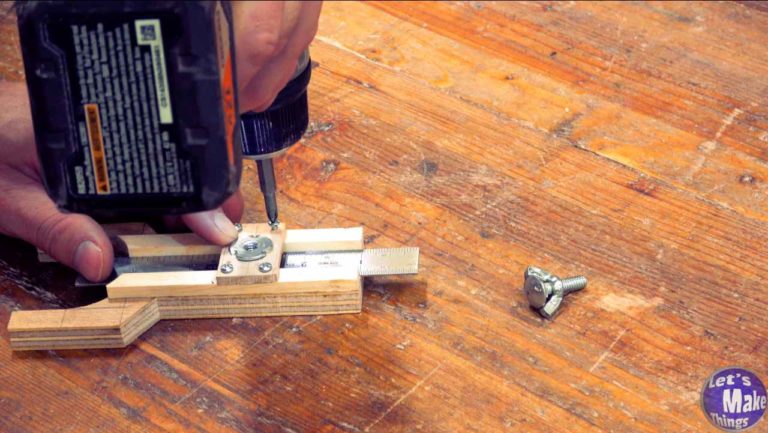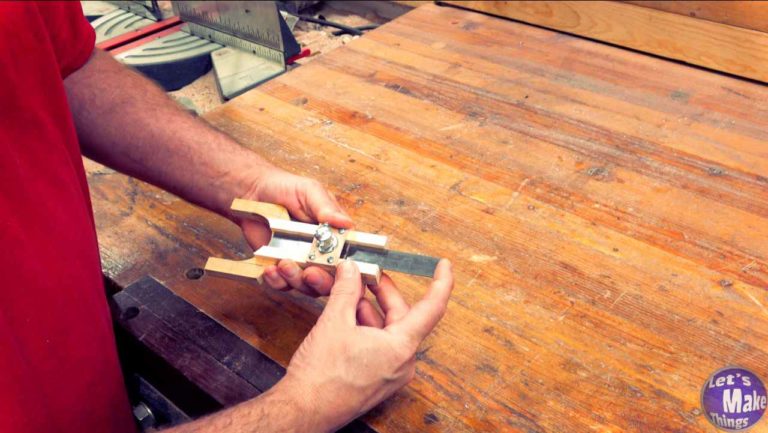Gauges
Simple depth gauge
If you’re looking to measure the depth or height of your table saw blade/router dado or looking to set a depth gauge tape for a drill bit, this is the tool. It can be made in 30 minutes and is extremely useful. Before you watch the step by step video below, check out a quick video on what it does.
watch all steps in this video before starting
Please use the material and tool list below as a guide to finding the products locally.
Printout
Materials
- 1/2″ x 3″ x 6″ plywood
- (2) 1/8″ x 3/8″ x 5″ wood strips
- 1/8″ x 1″ x 1 1/2″ Dense hardwood *
- Option 1: 6″ Plastic Ruler (for the gauge)
- Option 2: 6″ Steel Ruler (for the gauge)
- (4) #4 x 3/4″ Screws *
- 1/4″ x 1″ Carriage bolt *
- 1/4″ Wing nut *
- 1/4″ T-nut *
- 1/2″ magnet *
- Wood glue
- CA (super) glue *
- Epoxy *
Tools Needed/used
- Bandsaw
- Drill press
- 1/2″ Forstner bit *
- 2″ Forstner bit *
- 5/64″, 1/8″, 5/16″ Brad point bit *
- Speed square
- Fine ruler
- Pencil
- Glue mat
- Awl
- Hammer
As an amazon associate I earn from qualifying purchases.
Step by step instructions
1. Printout and materials
In this part of the video I briefly went over some of the alternative materials as well as the printout. Above I’ve listed all materials and tools needed with asterisks to the optional tools (depending on how you decide to make your depth gauge).
2. Measuring the body
We’ll measure the body out, basing all measurements on the printout (which, of course, you don’t really need to print). I will note here that I made a second version of the printout, so what you’ll you see in the video isn’t the full version.
Basically there are 3 lines that will be drawn at 3 1/2, 4 and 5 inches. Depending on whether or not you’ll use a 2″ forstner bit or just cutting out the opening, you’ll find the center of point at 5 inches. You could use a compass and cut the section out with a bandsaw or ignore the entire half circle and cut the opening out as a square.
4. Ruler explanation
This entire design is based off of a 6 inch ruler. Some rulers are exactly 6 inches, some half a space at the end. You’ll want your ruler to be exactly 6 inches. I did do a little digging on amazon to find the cheapest ruler I could find that is exactly 6 inches. It is plastic, but I don’t think you should have any problems. The link to that ruler is in the materials list.
The General ruler that I used in the video came from a Menards store and was a few bucks…but I couldn’t seem to find it at a price I liked online (that I wanted to recommend to others). Try searching your local hardware store and seeing what you find!
5. Building ruler channel
This ruler channel is basically a tunnel that the ruler slides through. It’s easy to create by pressing equal sized pieces of wood against the ruler. I used superglue to work in conjunction with the wood glue, but wood glue wood work all by itself. Just be very careful that you clamp it right up next to the ruler.
6. Adding a magnet (optional)
The magnet is optional at this point as you really don’t even need much to use this. So long as you’re okay holding the ruler in the channel with your finger, you could call this a finished project.
Another reason to not add the magnet is if you choose to add the clamp (which we’ll talk about in future steps). I did both to obviously show how to do it, but I think, if I were going to make another of these, I’d probably add the magnet. It just feels nice when you slide it.
Of course, if you chose to go with a plastic ruler, this step is meaningless.
7. Clamping t-nut (optional)
If you’re planning on adding the clamp, you’ll want to add a t-nut to a thin strip of wood. We’ll cut the barrel size out. Most 1/4″ t-nuts have a 5/16″ barrel diameter, which is what I ended up using to drill the hole, after finding the center by connecting the diagonals.
Each of the tines will need to be drilled out and an 1/8″ drill bit works perfectly. Then we’ll add epoxy make sure that the t-nut is flush to the wood and allow it a few hours to set up.
This is, of course, an optional step.
8. Operation
To use this depth gauge you’ll put the higher numbers of the ruler in the mouth of the gauge. When it’s time to use it you’ll put it over a blade or a bit and press down. At the top of the gauge the ruler will expose how much has been lifted out of the channel.
If you pressed the wood together in step 5 to build the channel, the friction of the wood should be good enough to give you a quick measurement.
9. Adding clamp
In this step we’ll add a clamp by first taking our 1/8″ x 1″ x 1 1/2″ piece of hardwood and connecting the diagonals to find the center. We’ll drill the center out with a 5/16″ brad point bit and place the t-nut back in and mark the points of the. Each of those points will be drilled out at an 1/8th of an inch.
We’ll epoxy the t-nut in and allow it to cure. Next we’ll add screws to each of the corners and attach them to the caliper.
Tip Jar
If you found any errors on the page, please use my email below and contact me!

